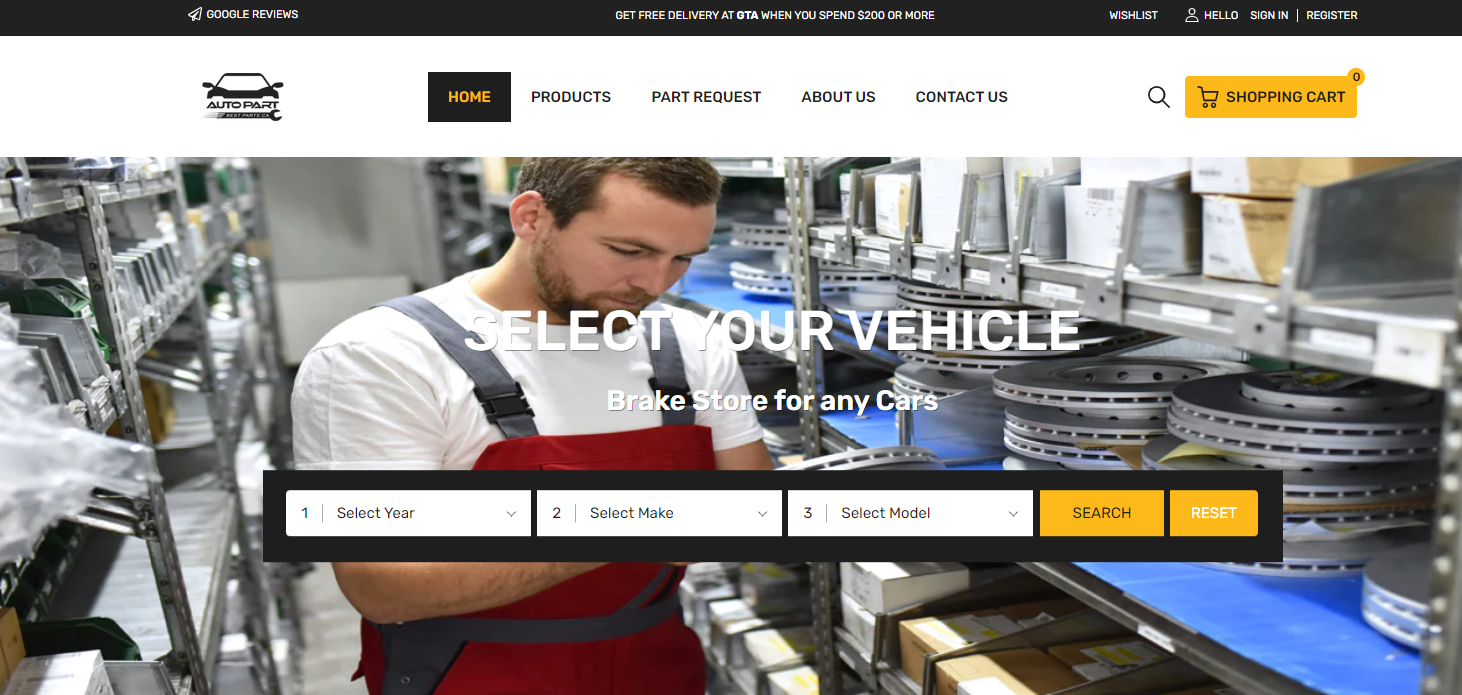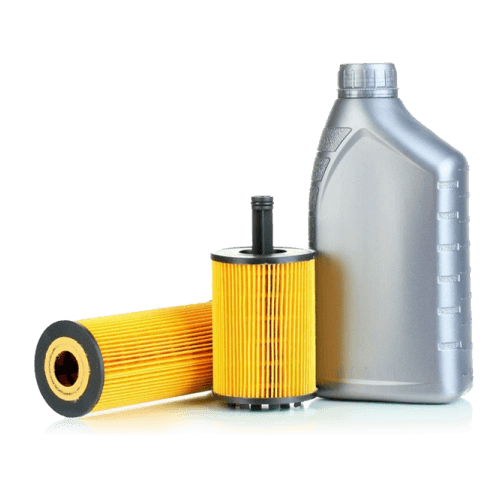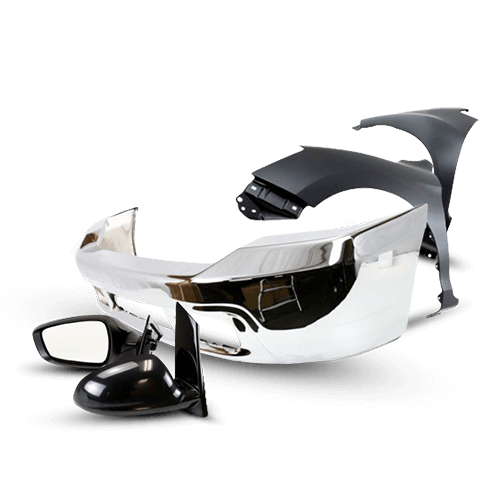
Is it Dangerous to Drive with Worn Brake Pads?
When it comes to vehicle safety, one important component that is frequently overlooked is the brake pad. These inconspicuous components play an important role in ensuring your safety on the road. In this article, we will look at brake pads, how they work, and why driving with worn brake pads can be extremely dangerous.
We will not only unravel the mysteries of brake pads in this article from the Bestpart website, but we will also investigate their intricate workings. We'll look at the signs that your brake pads are worn out and why driving with worn brake pads can have serious consequences.
What is a Brake Pad?
Brake systems are made up of several key components such as brake discs (rotors), brake calipers, brake fluid, and, of course, brake pads. Among these components, brake pads are critical to the braking process.

A brake pad is an essential component of the disc brake system found in most modern vehicles. It's a flat, rectangular piece of material designed to withstand extreme pressure and friction. The most obvious reason for the importance of brake pads is that they are directly responsible for bringing your vehicle to a stop when necessary. Without them, your vehicle would continue to move at high speeds, making roads significantly more hazardous.
How Brake Pads Work
To truly grasp the significance of maintaining your brake pads, it's essential to understand how these unassuming components function within your vehicle's braking system.
Brake pads are critical to your vehicle's ability to stop safely and effectively. They operate on a simple but ingenious principle: friction. When you press the brake pedal, a series of events occurs that eventually leads to the slowing or stopping of your vehicle.
In essence, brake pads work by creating friction with the brake rotor, which converts the kinetic energy of your moving vehicle into heat energy. This process is what ultimately enables you to slow down and stop your vehicle safely and efficiently. Here's a step-by-step breakdown of how brake pads work:
Brake Pedal Press
When you press the brake pedal, you're activating a hydraulic system. This system multiplies the force you apply to the pedal, allowing for efficient braking.
Hydraulic Pressure
The force from your foot is transmitted through brake fluid within the brake lines. This hydraulic pressure is crucial for converting your foot's pressure into stopping power.
Caliper Squeeze
The hydraulic pressure reaches the brake caliper, which houses the brake pads. In response to the pressure, the caliper squeezes the brake pads onto the brake rotor.
Friction Generation
This is where the magic happens. The brake pads, typically made of a high-friction material like ceramic or semi-metallic compound, come into contact with the spinning brake rotor. The immense friction generated between the brake pads and rotor causes the rotor to slow down, which, in turn, slows down the wheel attached to it.
Heat Dissipation
As the brake pads rub against the rotor, they generate a significant amount of heat. This heat is a natural byproduct of the friction process. It's essential because it allows your vehicle to convert kinetic energy into thermal energy, effectively stopping the vehicle.
Release and Repeat
When you release the brake pedal, the caliper releases its grip on the rotor, allowing the wheel to turn freely again. This process can be repeated countless times, giving you precise control over your vehicle's speed.
While it might seem like a straightforward process, the effectiveness of your brakes relies heavily on the condition of your brake pads. Over time, these pads wear down due to the constant friction and heat generated during braking. As they wear, their ability to generate the necessary friction diminishes, compromising your vehicle's braking performance.
Therefore, keeping a vigilant eye on your brake pads and promptly addressing any signs of wear is paramount to ensure your vehicle's safety on the road. In the sections ahead, we'll explore the indicators of brake pad wear and the potentially hazardous consequences of driving with worn brake pads.

How to Know Brake Pad Wear
Identifying brake pad wear is vital for your safety. Here are some signs to look out for:
- Squealing Noise
A high-pitched squeal when you apply the brakes can indicate worn brake pads.
- Reduced Braking Performance
If your car takes longer to stop or the brakes feel less responsive, it's a red flag.
- Vibration
Vibrations or pulsations through the brake pedal could mean uneven brake pad wear.
- Visual Inspection
You can often see the thickness of the brake pad through the wheel spokes. If it looks thin, it's time for a replacement.

4 Main Things That Happen When Driving with Worn Brakes
Driving with worn brake pads is not just ill-advised; it can lead to dire consequences:
1. You Will Damage the Brake Rotor and Caliper
Worn brake pads can't effectively dissipate heat, causing the rotor and caliper to overheat. This can lead to warping of the rotor and damage to the caliper, resulting in costly repairs.
2. Your Brakes Have a Very Slow Reaction Time
Worn brake pads require more time to create the necessary friction. In emergency situations, this delay can be the difference between a near-miss and a collision.
3. The Car Shakes When Braking
Uneven wear on brake pads can lead to vibrations, causing your car to shake wen you apply the brakes. This compromises your control over the vehicle.
4. It Will Wear Out Your Tires
Worn brake pads often cause uneven tire wear. This means you'll have to replace your tires more frequently, incurring additional expenses.
Never Drive with Worn Brakes
To sum it up, driving with worn brake pads is not worth the risk. The safety of you, your passengers, and others on the road should always be a top priority. If you suspect your brake pads are worn, have them inspected and replaced by a qualified mechanic promptly.
read more: When is the best time to change the car brake pads?

Conclusion
The brake pads on your vehicle are an important safety feature, and failing to maintain them can have serious consequences. Inspect your brake pads for wear on a regular basis and replace them as needed. When it comes to your brakes, it's always better to be safe than sorry!
FAQs
• Can I visually inspect my brake pads?
Yes, you can often see the thickness of the brake pad through the wheel spokes. If it looks thin, it's time for a replacement.
• How often should I replace my brake pads?
The frequency of brake pad replacement depends on your driving habits and the type of brake pads you use. Generally, it's recommended to inspect them annually or every 12,000 to 15,000 miles.
• Can I replace brake pads myself?
While it's possible to replace brake pads yourself if you have the necessary skills and tools, it's safer to have a professional mechanic do the job to ensure it's done correctly.























































